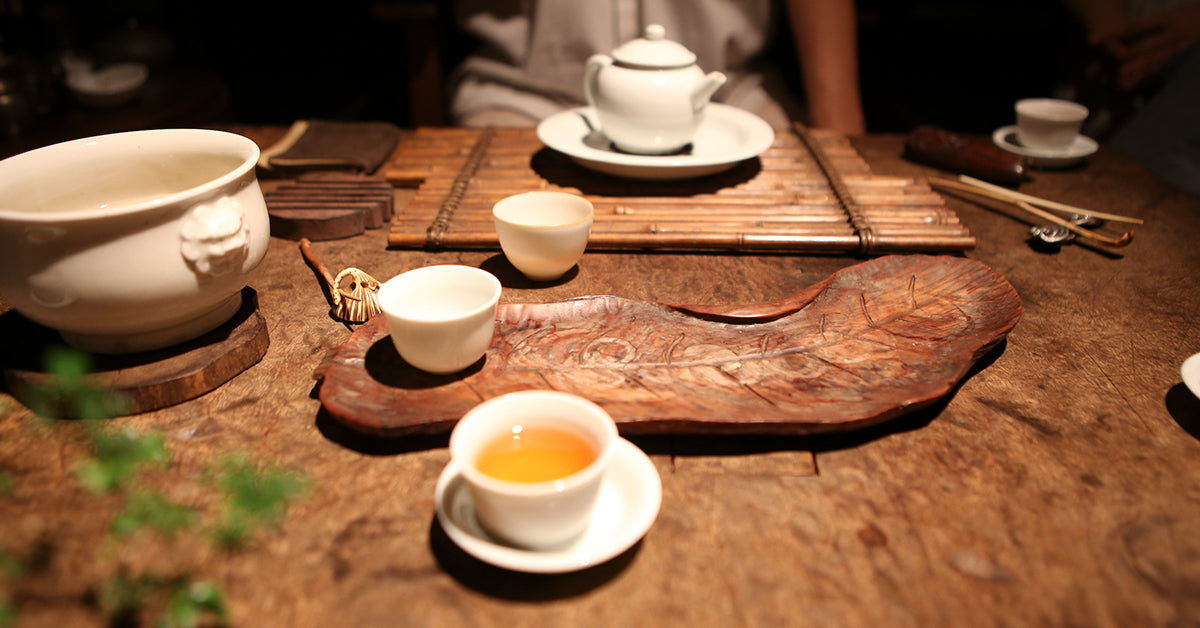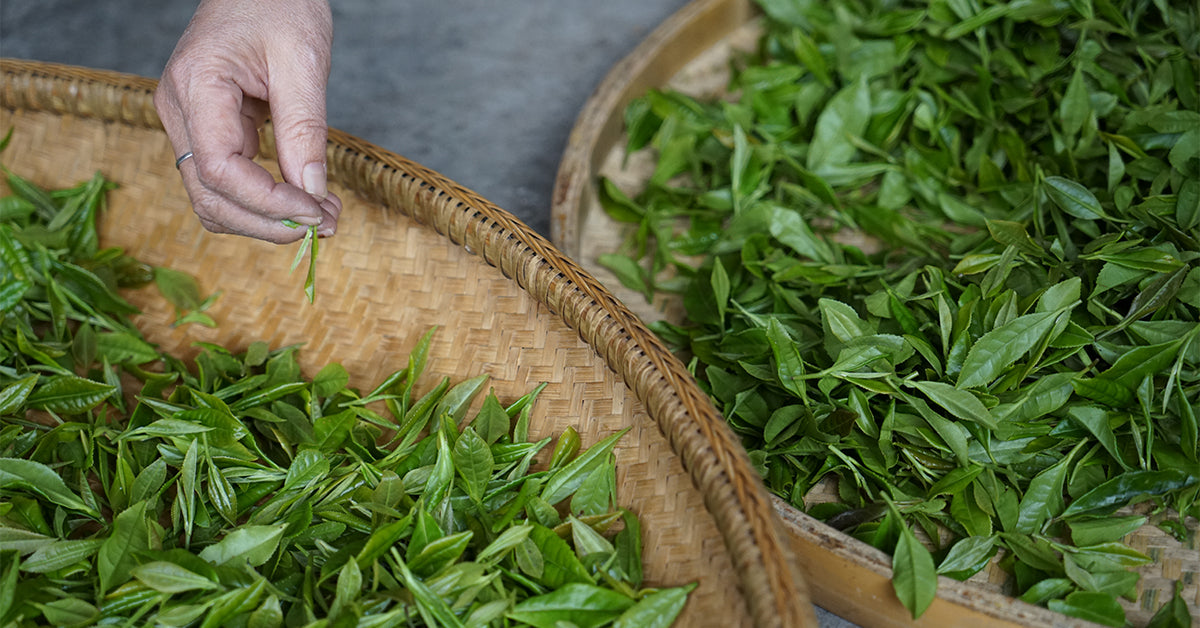This installment of me spilling the tea is the final chapter in our two previous Tree to Tea blogs. If you’ve been following along, you’ll know that so far we’ve covered the following:
From Tree to Tea Part 1: Growing, Harvesting, Withering
From Tree to Tea Part 2: Fixing, Rolling, Oxidation, Fermentation, Firing, Sorting
If you thought we were done, you thought wrong! The tea isn’t quite in your cup yet, right? This blog takes the tea from our previous episode of “From Tree to Tea” where it had just been sorted to how it gets to Harney, and what we do with it once it gets here. It’s kinda like Star Trek -- we’re taking you where no one has gone before! Exciting, right?

Sourcing and Buying Tea
It all begins here with how and where we source and purchase our teas.
We get many of our teas through tried and trusted sources: our friend Marcus Wulf in Hamburg, Germany; Steve He in Changsha, China; Tsuyoshi Sugimoto in Uji, Japan -- they are great examples. We also try new ones out for smaller and specialized teas, like Amy in Fuan, China, and Alison in Colombo, Sri Lanka.
As far as the process goes: our existing suppliers know what we want, so when that part of the tea season rolls around, we get several choices of the tea we bought the previous year. Then my tasting partner extraordinaire, Elvira Cardenas, and I taste about a dime’s weight of tea using a method that we have refined over the years. We look at the tea, smell it and finally taste it. The way we taste is similar to a wine taster. We gurgle the tea, trying to make a liquid into a gas that we might smell. The nose is better at these things than your mouth -- smelling, that is. See this blog and watch my son Emeric ably demonstrate the awkward thing that is tasting tea.
So, after that trial, we also look at the quantity, if it is Certified Organic or Fair Trade and, yes, even the price. When we do decide, we often get outturn samples, a second taste and test that we often us for verification purposes to let us know that what the producer states we're getting is what we really will get. Sometimes for small lots of Oolong teas, we do not get exactly what we bought, since it is a seller’s market.
Since China is the original source of teas and has the widest variety, we get quite a bit from there. On top of the cost of the tea, there is still a 15% tariff, which I guess is protecting the U.S. tea producers. India is a big source of tea, especially Assam and down south in the Nilgiri hills. Japan has grown as a source of the matcha craze. Let us not forget Sri Lanka, it offers almost as wide a selection of tea as China.
As far as our criteria for selecting tea, I’ve written about this story before but it’s worth repeating because it is advice we truly follow and encourage our customers to follow as well. Marcus Wulf’s father, Bernd, taught me quite a bit about teas (my own father and our founder, John, taught me about hospitality). Bernd Wulf said, “ Only buy teas that make you smile.” That sounds like good advice. Later when I wrote my book: Harney & Sons Guide to Tea, I came to learn about the reason. Sweetness makes one smile, and natural sweetness occurs in tea with the best teas grown at the best time of the year. So do follow Bernd’s advice.

Tasting and Blends
Our tasting room may be the most important room in our building. We’ve got a really good team. After many years working with me and many trips to Asia, Elvira understands our “style” of tea -- and it is different from other tea companies. So there’s me, Elvira, and some assistants who shepherd the samples and set up the many, many tasting cups from which we make our decisions.
The word has gotten out that selling tea to Harney & Sons is good. So we do get tea makers who send us samples often. Often, sadly, those teas do not make us smile. So we apologize and say that we will not buy from them.
When it comes to creating blends: tea blends can have a complex birth with many parents, or they can come to me in a flash. By now, Elvira and I know what many teas and other ingredients taste like, so we might add a novel ingredient or maybe a different combination.
It can take several attempts to make a blend that we are happy with. In the end, however, we follow Bernd’s advice when making blends. They have to make us smile.

Storing Tea at Harney
As you might imagine, we have a LOT of tea at our warehouse. We try to buy about a year’s supply of teas. As I said, the best tea from an area is only made at the best time, which is but a few weeks. So we buy at that time. Later, the spot market is filled with teas that were not good enough to find a home earlier in the year.
We then have to store that tea, so we have mountains of tea. In fact, we are building a new warehouse behind our headquarters in Millerton, NY, and will store our teas there.
An exception is green tea. We are able to get Japanese green teas several times a year, since they store their teas in refrigerated spaces. We now store our own specialty green teas from China and Japan in a refrigerated space.
(Curious about how to properly store your tea at home? Lucky for you, we have some great tips on how to do that in our Does Tea Go Stale? blog post.)
Once we are finished sourcing, purchasing, blending, tasting, and storing our teas, there is of course the packaging process. I won’t go into the very complex and interesting ways we get our teas into tins, sachets, and teabags, but if you’d like to see some of the processes, I’m throwing one of our behind-the-scenes videos of those processes for your viewing pleasure.
To summarize: the entire, multifaceted process of growing, processing, sourcing and packaging tea is only important if, when it lands in your cup, it makes you smile. That’s why we go to the lengths we do because it is our mission and our greatest pleasure to bring the world the finest teas possible. Even if we do sound ridiculous when we taste it. Totally worth it.
















1 comment
Brad
This series was such a delight! As delightful as your teas! Thank you for all y’all do!
This series was such a delight! As delightful as your teas! Thank you for all y’all do!